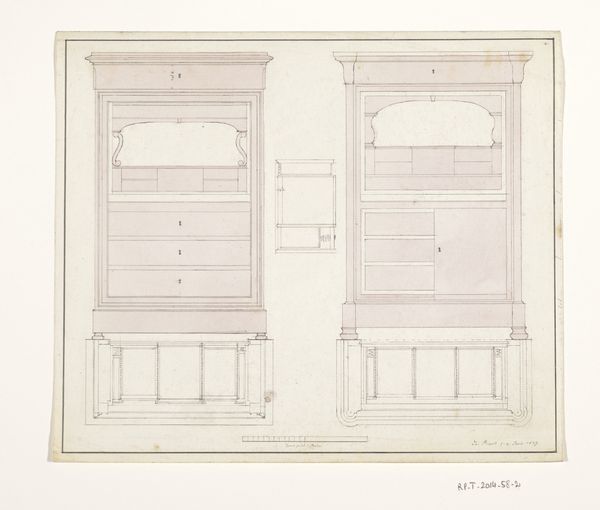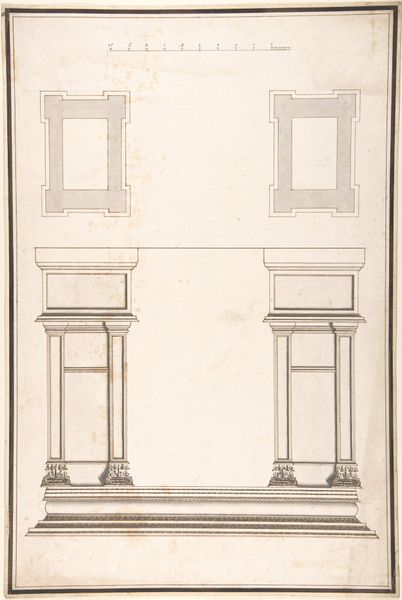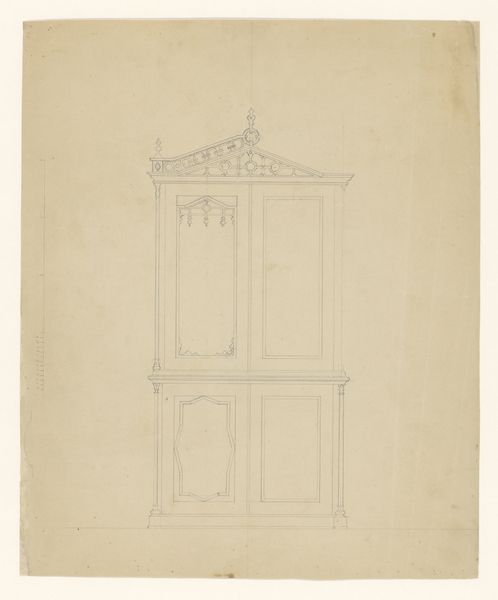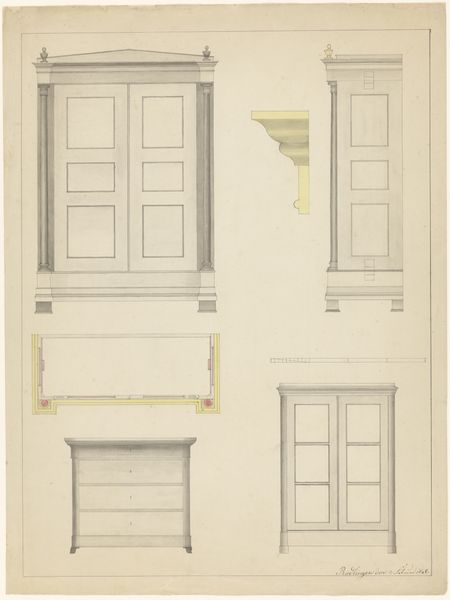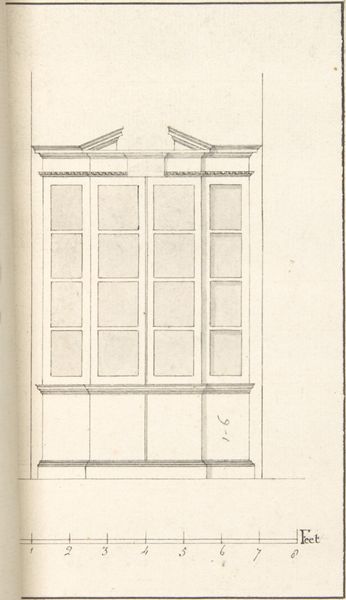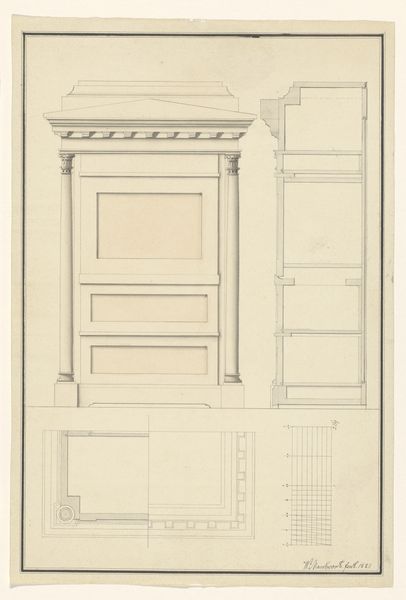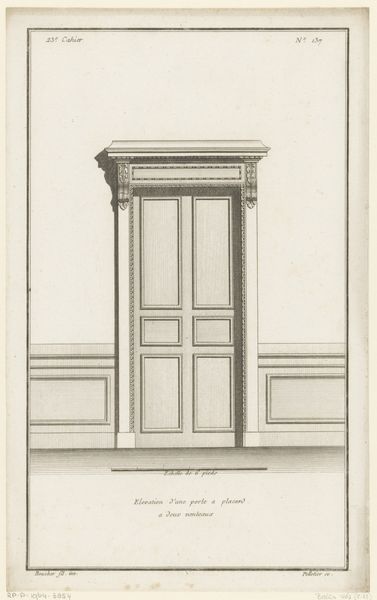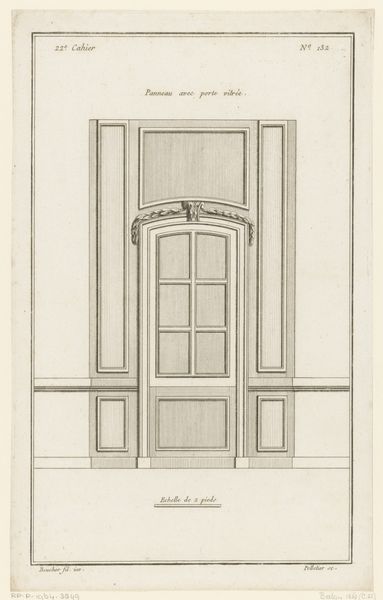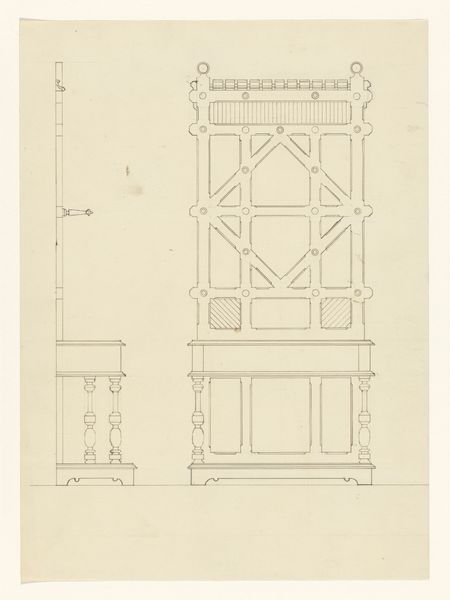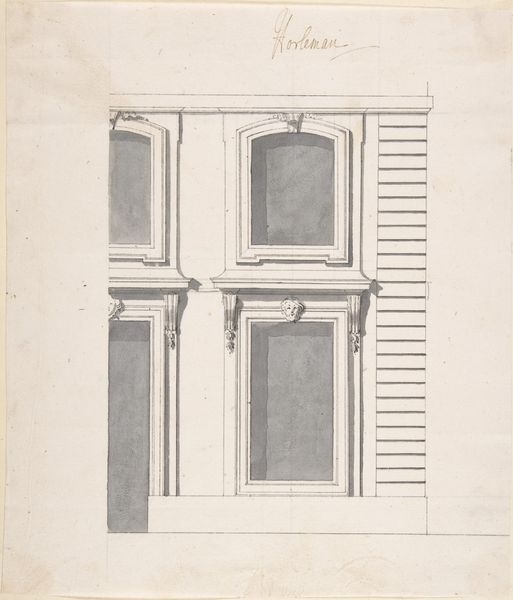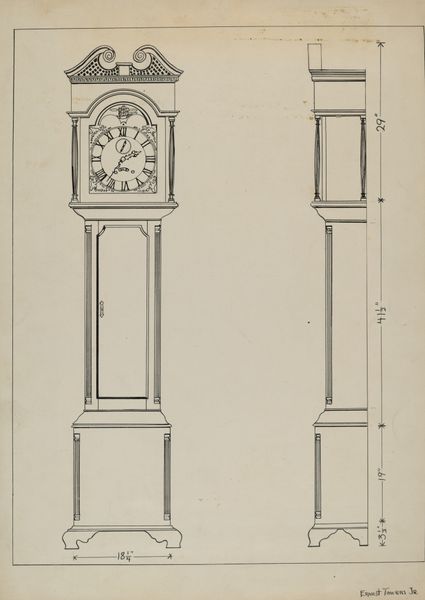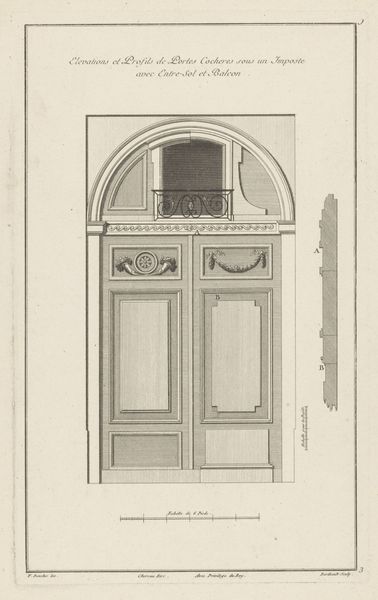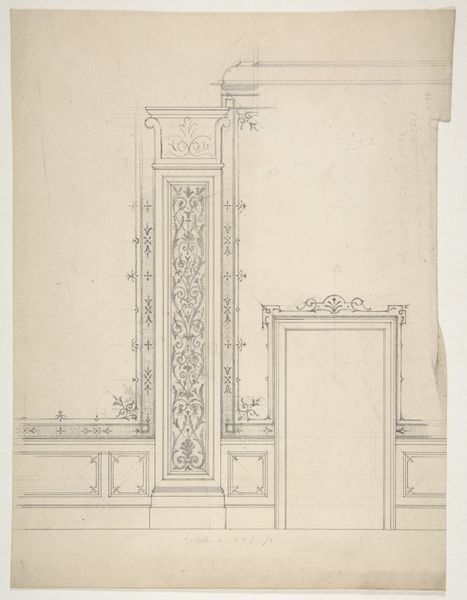
Ontwerp voor een bureau met opstand, met zijaanzicht en detail van het interieur c. 1866 - 1870
0:00
0:00
drawing, paper, pencil
#
drawing
#
paper
#
geometric
#
pencil
Dimensions: height 400 mm, width 281 mm
Copyright: Rijks Museum: Open Domain
Editor: So, this is Joseph Kusterer's "Ontwerp voor een bureau met opstand, met zijaanzicht en detail van het interieur" from around 1866-1870. It's a pencil drawing on paper showing the design for a rather grand desk. I'm immediately struck by the sheer labor involved in creating such detailed plans, the calculation of space and materials... What jumps out at you? Curator: For me, this isn’t just about aesthetics; it's a document of material culture. This meticulously drafted design reveals the socio-economic factors driving furniture production in the late 19th century. Who would own such a desk, and what kind of labor would have been required to produce the piece? How does its geometric, almost classical style reflect contemporary notions of status and refinement? Editor: That's interesting. I hadn't really considered the labour aspect so directly. I guess I was thinking about the finished product as the aspirational object, and the consumer who might commission this kind of desk. Is the drawing itself then also a product, a commodity in a way? Curator: Precisely! It exists as both a blueprint for something functional and a representation of a particular social order. Consider the paper, the pencil, the drafter’s skill - each component is a material element contributing to the overall value. Where were the raw materials sourced? What workshops would realize this design? These are critical questions. Editor: So you are arguing the drawing highlights the making, the labour of production? That hadn’t occurred to me. I was initially focused on the aesthetic aspects of the design. Curator: Exactly. And consider how this drawing circulates, how it represents value, and what kind of access different social groups might have had to it. These kinds of designs reinforced existing structures. Editor: I guess I usually think of "art" as separate from design, or craft. This definitely challenges that! Thanks! Curator: It forces us to think beyond simply whether something is beautiful, and instead to ask how art and design interact with our material reality. A vital distinction to carry forward, I think.
Comments
No comments
Be the first to comment and join the conversation on the ultimate creative platform.
